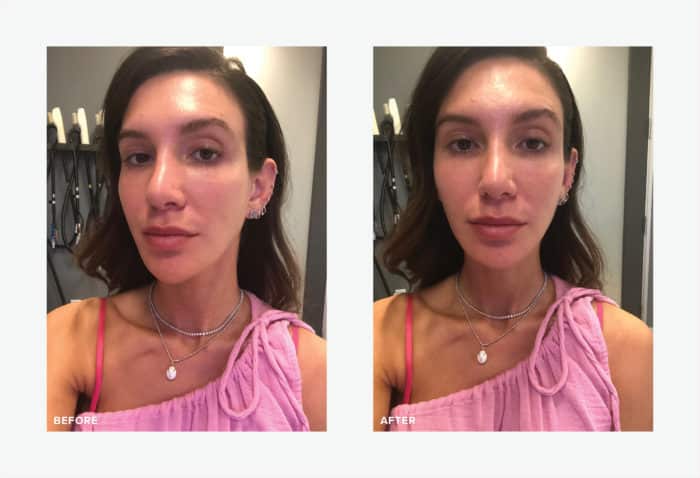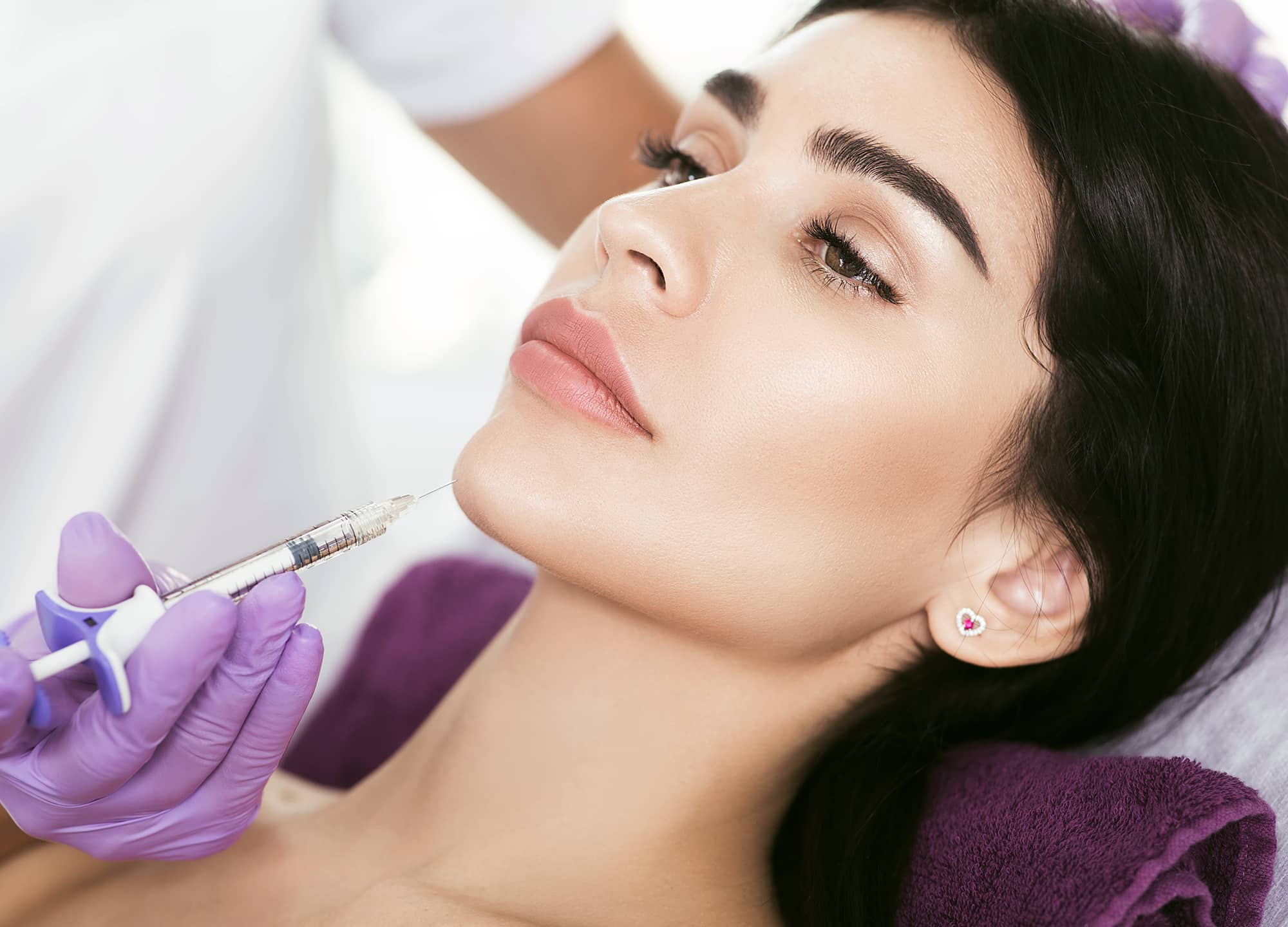Dermal filler is a cure-all for just about every facial concern I have. Chicken pox scar? Filler. Atrophic acne mark? Filler. Hollows under the eyes? Filler. My face is the first place that tends to show weight loss, so the hyaluronic acid–based injections have been a godsend in protecting me against my ultimate aesthetic nightmare: Skeletor.
Experimenting with dermal fillers over the years has been a lot of trial and error, with moments of overwhelming joy and occasional regret. The first time I got filler, I was 23 years old. I had just undergone a breast augmentation, and Allergan, the maker of my implants, was holding a promotion: get one free syringe of Juvéderm with the purchase of silicone breast implants. My plastic surgeon’s office had a medical spa where I could redeem my free syringe with purchase, and I decided to use it in my lips—well before Kylie Jenner opened the floodgates, thank you very much. I loved the subtle results, and my relationship with filler was off to a great start. “If you aren’t filling, you aren’t winning,” I liked to say.
Last August, I was feeling downtrodden after a breakup and a snowballing series of misfortunes. I decided to engage in one of my favorite forms of self-improvement: cosmetic treatments. After a lengthy consultation, I convinced a plastic surgeon to fill my chin more than I’d ever been filled in that area before. The goal: to give more definition and projection to my chin and jawline. The outcome? My face was elongated in a way I wasn’t happy with, and it hurt like hell. Once the lidocaine in the filler wore off that evening, I was excruciatingly sore. I could barely open my mouth, let alone chew solid foods.
Since hyaluronic acid helps retain 1,000 times its weight in water, my chin felt like a full water balloon after a couple of weeks. I’ve been less than enthused by some of my filler results over the past six years, but this was different. I was angry and upset, and I needed it gone.
The good thing about hyaluronic acid–based dermal fillers is that, unlike neurotoxins (Botox, Dysport, etc.), you can reverse the procedure if you’re unhappy. For complications like overcorrection or formed lumps, an enzyme called hyaluronidase can be injected locally to degrade the filler.
Related: What’s the Difference Between Botox, Dysport, Xeomin and Jeuveau?
Dissolving filler was uncharted territory for me though. I was worried about the enzyme migrating and atrophying other parts of my face, making me look like Swiss cheese. After days of researching the treatment, I learned that adjusting fillers is as much of an art form as injecting them in the first place. I went to a plastic surgeon I trust to dissolve my water-balloon chin, and he assured me that “Swiss cheese face” wouldn’t happen. He injected Vitrase, a common brand of hyaluronidase, directly into my chin at three strategically placed sites. From the moment it was injected, the hyaluronidase started to burn. Burning is a normal response to the enzyme reacting with the HA-based filler, but this was next-level pain compared to any injectible or facial procedure I’ve ever had. (I get dental fillings without novocaine, so it’s safe to assume that I have a higher pain threshold than most.) Hyaluronidase works rapidly, and I could see my chin decreasing in size soon after. I felt a burning sensation for the rest of the day, in stages: sometimes warm and tingly, other times red-hot.

The chin is extremely vascular, so I started to bruise almost immediately. I knew I would look like I’d gone 10 rounds with Floyd Mayweather, so I prepared myself for at-home hibernation. Wrapping an ice pack in a muslin cloth and applying it locally was a no-go; my teeth started to chatter from the cold on my chin and jaw. I like to keep arnica gel in the fridge for aftercare and bruises in general, and I think this helped to speed up the phases of bruising as I turned various shades of purple and yellow.
Related: 7 Unexpected Areas Where Filler Injections Can Have a Big Impact
After two to three days of intense bruising, I was able to conceal the black-and-blues adequately enough with concealer. The payoff was worth it: My chin was back to the way I like it (picture Sailor Moon meets Frozen’s Elsa), and I knew never to go too heavy-handed in the region again. As it turns out, too much of a good thing can be a bad thing—I only wish I hadn’t spent thousands to learn that lesson.











